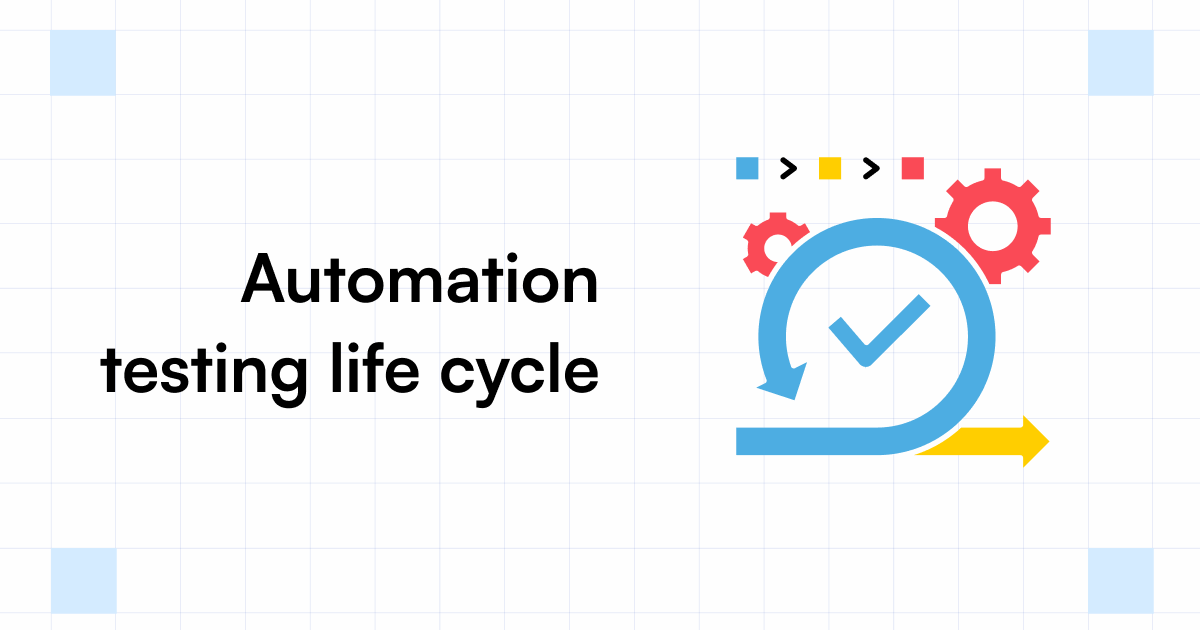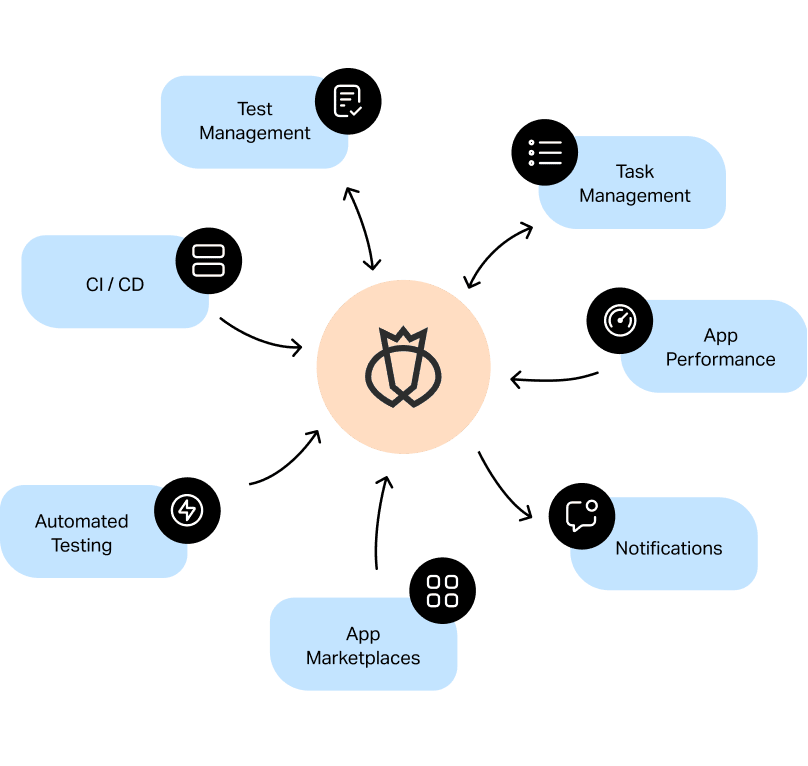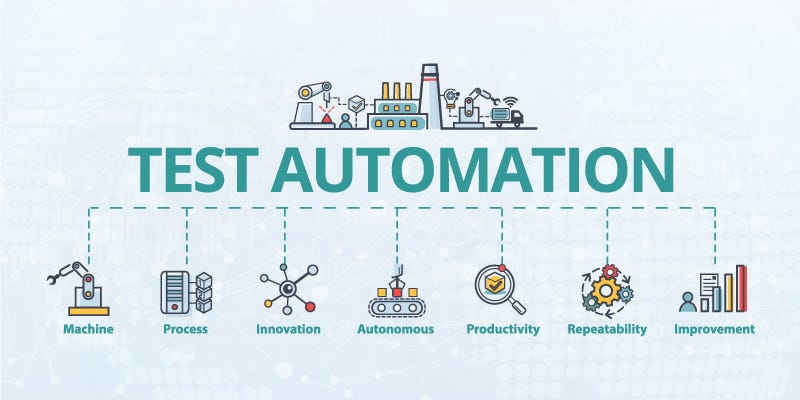Exploring the Future of Automation Testing in Software Advancement
Exploring the Future of Automation Testing in Software Advancement
Blog Article
From Handbook to Automated Testing: A Comprehensive Overview to Transitioning Efficiently and Effectively
In the world of software application testing, the shift from manual to automated procedures has actually become a significantly essential change for companies seeking to boost effectiveness and accuracy in their testing techniques. As innovation remains to advancement, the need for efficient and seamless computerized screening methods has actually never ever been much more pressing. The journey from handbook to automated testing is not without its difficulties, yet when come close to strategically and with a clear plan in mind, the benefits can be considerable - automation testing. In this comprehensive overview, we will certainly check out vital actions and factors to consider important for a successful shift, from the initial selection of tools to the assimilation of automation into existing workflows. Remain tuned to discover the insights that will certainly assist lead the way for a smoother and much more efficient testing process.
Benefits of Automated Checking
Automated screening offers numerous benefits, enhancing performance and precision in software program development processes. One primary benefit is the significant reduction in testing time. Automated tests can be run concurrently on numerous tools and operating systems, considerably speeding up the testing phase contrasted to hand-operated testing. This increased performance enables for faster responses on the quality of the software application, allowing developers to determine and resolve concerns promptly.
Additionally, automated testing makes sure a higher degree of precision in finding problems. Consistency in testing is additionally improved, as automated examinations execute the very same actions exactly each time they are run.
Choosing the Right Tools

Firstly, examine your objectives and needs. Comprehend the extent of your job, the technologies included, and the ability of your group. This evaluation will certainly aid you determine the capacities and attributes you need in your testing devices.
Second of all, think about the compatibility of the devices with your existing procedures and systems. Smooth assimilation with your existing software program advancement lifecycle is vital to ensure a smooth change to automation.
Furthermore, assess the scalability and adaptability of the devices. As your testing requires progress, the tools should be able to adapt and fit modifications effectively.
Last but not least, variable in the support and community around the tools. When carrying out automated testing, durable assistance and an energetic customer community can supply beneficial resources and assistance. By carefully considering these elements, you can select the right tools that line up with your demands and established the phase for a successful shift to automated testing.
Creating Effective Test Scripts

When crafting examination scripts, it is necessary to take into consideration the details needs of the software application being evaluated and make certain that the scripts deal with all vital functionalities. Clear and descriptive naming conventions for examination manuscripts and examination situations can boost readability and maintainability. Additionally, integrating mistake handling systems within the test manuscripts can aid in identifying and resolving concerns promptly.
Moreover, arranging examination manuscripts right into modular components can improve reusability and scalability, decreasing redundancy and boosting effectiveness in examination script upkeep. Regular reviews and updates to examine manuscripts are important to keep speed with advancing software application needs and functionalities. By complying with these concepts, testers can create durable and effective examination scripts browse around these guys that contribute significantly to the success of automated testing processes.
Integrating Automation Into Workflows
By seamlessly incorporating automated testing devices like Selenium or Appium right into the software advancement lifecycle, teams can accomplish faster feedback on code adjustments, leading to quicker insect discovery and resolution. This assimilation permits for constant testing throughout the development process, guaranteeing that any issues are find out here recognized early on, resulting in greater software top quality. Correct integration of automation devices requires cooperation in between growth, testing, and procedures groups to develop a unified workflow that maximizes performance and effectiveness in supplying top quality software application items.
Guaranteeing a Smooth Change
Successfully transitioning to automated screening entails precise preparation and careful implementation to lessen disturbances and make the most of effectiveness in the software development process - automation testing. To ensure a smooth shift, it is necessary to start by performing a complete assessment of the current testing processes and identifying locations where automation can bring one of the most substantial advantages. Involving with all stakeholders at an early stage at the same time, consisting of designers, testers, and project managers, is crucial for gathering support and buy-in for the automation effort
Communication is key throughout this change phase. Clear interaction of the goals, benefits, and assumptions of automated testing aids to handle any resistance or worries that might develop. Additionally, providing sufficient training and sources for staff member to upskill in automation devices and methods is important for ensuring an effective change.

Final Thought
To conclude, transitioning from manual to automated screening supplies various advantages, including raised efficiency and integrity. By selecting the ideal devices, composing reliable test scripts, and incorporating automation effortlessly into operations, organizations can guarantee a smooth and effective shift. It is vital to welcome automation as a beneficial asset in software screening procedures to enhance total quality and productivity.
In the world of software application screening, the shift from handbook to automated procedures has become a significantly crucial transition for organizations looking for to boost efficiency and accuracy in my company their screening practices. Automated tests can be run simultaneously on multiple gadgets and operating systems, dramatically speeding up the testing stage contrasted to manual testing. Uniformity in testing is also improved, as automated tests carry out the very same actions precisely each time they are run.To make certain the successful implementation of selected screening devices, the development of efficient examination manuscripts plays an important duty in validating the performance and performance of automated procedures - automation testing. By adhering to these principles, testers can produce robust and reliable examination manuscripts that contribute substantially to the success of automated testing processes
Report this page